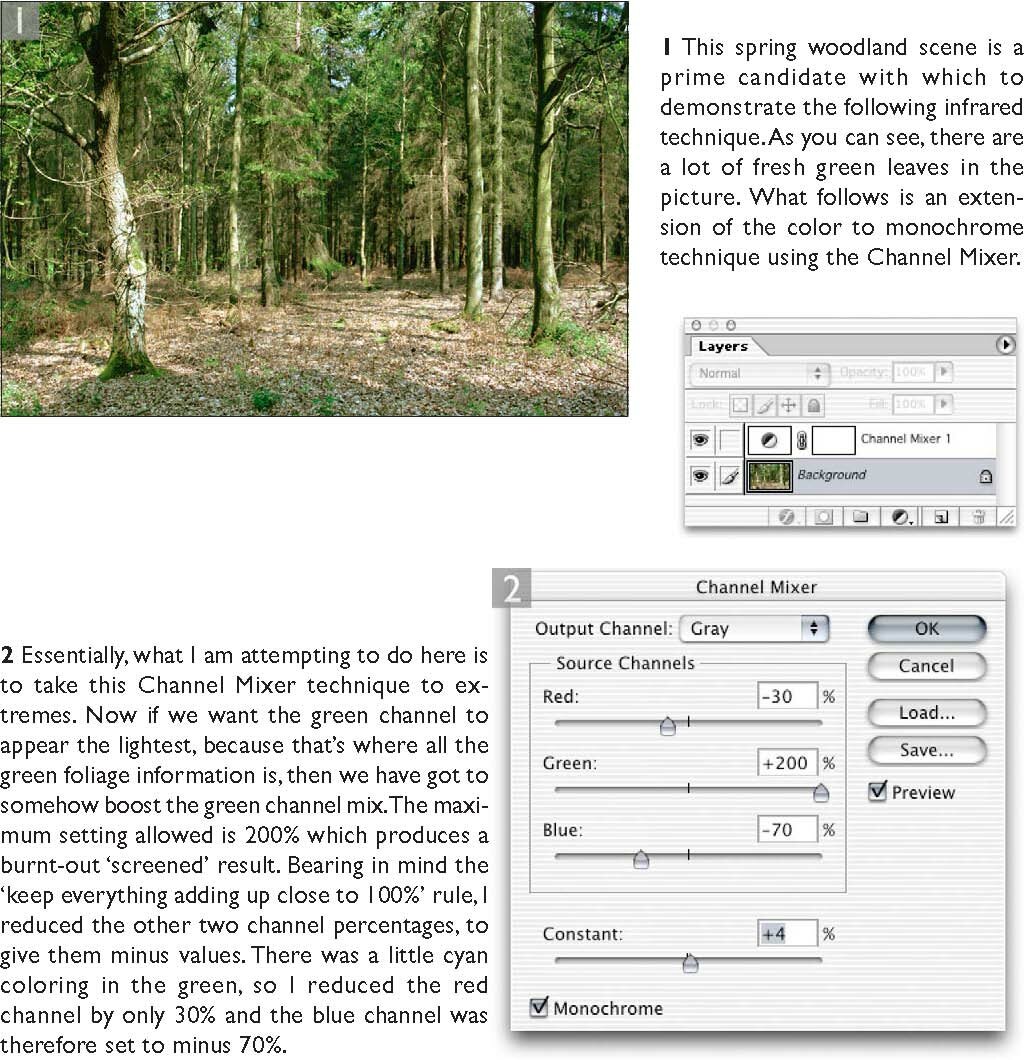
???? 
|
ѕользователи | онкурсы | —татьи | —сылки | ‘ото камеры | ƒоска объ€влений | “еги |
| √лавна€ —тартова€ |
ѕользователь: ?
guest( ¬ойти |–егистраци€ ) |
|
—борные слои онтуры Cropping »нфракрасный Liquify –етуширование орректор –исование Plastering |
Black and white effectsInfrared film simulation The spectral sensitivity of a photographic film emulsion will extend slightly beyond that of the human visual spectrum. This can sometimes cause problems in color photography when an object radiates light we cannot see, but the film does. This phenomenon, known as metamerism, can affect the way the colors of specific garments can appear the wrong color on the final film. There is also a special infrared sensitive film emulsion you can buy, which is acutely sensitive to infrared radiation. The black and white emulsion is quite grainy. Vegetation reflects a lot of infrared light which we human observers are not aware of. Hence, green foliage will appear very bright and almost iridescent when captured on infrared film. 
1 This spring woodland scene is a prime candidate with which to demonstrate the following infrared technique.As you can see, there are a lot of fresh green leaves in the picture. What follows is an extension of the color to monochrome technique using the Channel Mixer. 2 Essentially, what I am attempting to do here is to take this Channel Mixer technique to extremes. Now if we want the green channel to appear the lightest, because thatвАЩs where all the green foliage information is, then we have got to somehow boost the green channel mix.The maximum setting allowed is 200% which produces a burnt-out вАШscreenedвАЩ result. Bearing in mind the вАШkeep everything adding up close to 100%вАЩ rule, I reduced the other two channel percentages, to give them minus values. There was a little cyan coloring in the green, so I reduced the red channel by only 30% and the blue channel was therefore set to minus 70%. Adobe Photoshop 7.0 for Photographers
3 So far so good. Now I want to add some glow to the foliage. It is important that the underlying image has remained in RGB (because it is the adjustment layer which is making the monochrome conversion). I went to the Channels palette and highlighted the green channel and applied a Gaussian blur filtration to that channel only.The result of the full blur is shown opposite.This isnвАЩt the desired result, so I followed that with an Edit > Fade Filter command, reducing the blur to a 26% opacity and Screen blend mode. 
4 This is the final result after applying the Channel Mixer adjustment and green channel blur on the Background layer. To further simulate the infrared emulsion, try adding a hefty amount of Gaussian noise filtration to either all three color channels or the green channel only. 
|
|
—ообщений: 1258 ѕользователей: 2693 ѕриветствуем: ѕохудеть http://morganvi √ости: 4 «арегистрированые: 0 |
¬се работы размещенные на сайте принадлежат их авторам, любое использование материалов сайта с об€зательной обратной ссылокой. |
ICQ?207238348 |